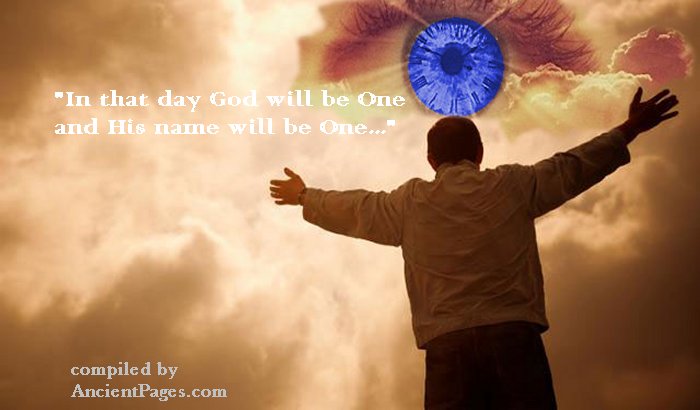Sacred Number One: Very Powerful Symbol Equated With The Mystic Center
A. Sutherland - AncientPages.com - 'One' is a sacred symbol of great power. It symbolizes the universe's absolute, totality, infinity, and center. It is the center of being and the cosmos. It is equated with the mystic center.
It is considered significant in many cultures, representing the invisible but active creative force underlying everything.
From 'one' breaks the plurality, but this number also means individuality and originality, and at the same time - loneliness.
The 'one' has been considered the mother, root, and source of all other numbers; added to each, change it from odd to even and vice versa.
In antiquity in the Middle East, the 'one' was the perfect number. It was believed that by passing from zero to unity people, they were passing from non-existence to existence.
All other numbers were considered to be the union representing the Creator.
In the beliefs of ancient Egyptians, God Ra (Re) was called the 'One,' and in ancient Mesopotamian religion, the god of heaven, Anu, was identified with the divine "Unity."
In one text, he is the one "who contains the entire universe."
The biblical prophet Zacharias says: "In that day God will be One and His name will be One" (14, 9), which means that the Israelis, similar to their neighbors, saw the symbol of the Creator in one.
The 'one' also stands for spiritual unity - the everyday basis between all beings.
However, according to René Guénon (1886 – 1951), a French author, intellectual, and influential figure regarding metaphysics, sacred science, symbolism, and initiation, there is a difference between unity and one. However, Cirlot, J. E., in "A Dictionary of Symbols," says that 'Guénon distinguishes unity and one, after the Islamic mystic thinkers: unity differs from one in that it is absolute and complete itself, admitting neither two nor dualism. Hence, unity is the symbol of divinity. One is also equated with light.'
The 'One Symbolizes Our Ego
It also symbolizes our ego, conscious activity, and the beginning of ventures and essential life stages. It is related to our individuality and experience. It can mean independence and loneliness, depending on whether it manifests itself in a harmonious or non-harmonious way.
The Pythagoreans referred to the number 'one' as the "monad." The concept may refer to a single source acting alone, a unified origin, or both.
It symbolized the Creator. In cosmogony, it relates to the Supreme Being, divinity, or the totality of all things.
Further, 'monad' means The One, Unity, The Great Spirit, Permanence, and many other names.
Some believe that "we cannot speak of the 'One' because to speak of it is to make an object of it, implying separation from it, thus misrepresenting the essence of Oneness from the start, a mysterious conundrum..". (M. Lundy).
Number one symbolizes menhir, an upright man standing in a position that distinguishes people from other creatures, masculinity, or finger. This number is mentioned in many ancient proverbs.
"One can do little," "one will not make expensiveness or cheapness," One will not help everyone, and everyone can. Sometimes the number 'one' stands for one hundred, and one hundred does not stand for one.
In the Tarot, the number one is the card of the Magician. The Magician symbolizes the power of the will and the capability to achieve goals.
'One-eyed' means divine omniscience, and in the Hebrew alphabet, Aleph – is the first letter, which signifies the number one.' Aleph indicates the Oneness and Unity of the Creator. It also suggests that beyond the illusion of separation and duality is underlying Oneness – that nothing is separate and the Creator is the source of everything.
Written by – A. Sutherland - AncientPages.com Senior Staff Writer
Updated on February 22, 2023
Copyright © AncientPages.com All rights reserved. This material may not be published, broadcast, rewritten or redistributed in whole or part without the express written permission of AncientPages.com
Expand for referencesReferences:
Lundy M. Sacred Number
Walking Kabbalah
http://www.walkingkabbalah.com/
Cirlot, J. E.. A Dictionary of Symbols
More From Ancient Pages
-
 The First ‘Viking’ Was A Bronze Age Man
Civilizations | Jul 26, 2024
The First ‘Viking’ Was A Bronze Age Man
Civilizations | Jul 26, 2024 -
 The Maasai Legend Of Hero Lakalanga And His Ancient Footprints
African Mythology | Jul 12, 2019
The Maasai Legend Of Hero Lakalanga And His Ancient Footprints
African Mythology | Jul 12, 2019 -
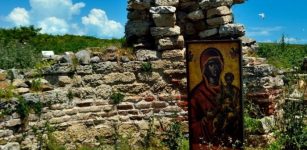 A 1,500-Year-Old Holy Well Probably With Healing Water – Discovered In Bulgaria
Archaeology | Nov 25, 2020
A 1,500-Year-Old Holy Well Probably With Healing Water – Discovered In Bulgaria
Archaeology | Nov 25, 2020 -
 Rare Early Bronze Age Axe Discovered In Slovakia
Archaeology | Jul 2, 2022
Rare Early Bronze Age Axe Discovered In Slovakia
Archaeology | Jul 2, 2022 -
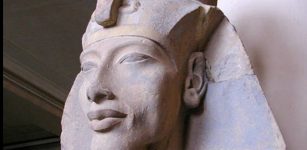 Akhenaten: Unorthodox Ruler Who Had Only One God
Featured Stories | Mar 28, 2017
Akhenaten: Unorthodox Ruler Who Had Only One God
Featured Stories | Mar 28, 2017 -
 Understanding The Green Sahara’s Collapse
Earth Changes | Aug 22, 2024
Understanding The Green Sahara’s Collapse
Earth Changes | Aug 22, 2024 -
 Historical Artifacts Found In The Mammoth Cave’s Mysterious Passageway
Archaeology | Jul 12, 2022
Historical Artifacts Found In The Mammoth Cave’s Mysterious Passageway
Archaeology | Jul 12, 2022 -
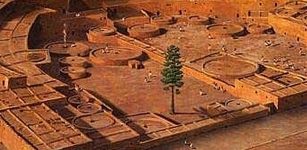 Ponderosa Pine: Life And Death Of One Of America’s Most Mysterious Trees
News | Mar 18, 2020
Ponderosa Pine: Life And Death Of One Of America’s Most Mysterious Trees
News | Mar 18, 2020 -
 On This Day In History: Gold Discovery In The Yukon – On August 16, 1896
News | Aug 16, 2016
On This Day In History: Gold Discovery In The Yukon – On August 16, 1896
News | Aug 16, 2016 -
 Lost Astronomical Treatise By Claudius Ptolemy Discovered
Archaeology | Mar 30, 2023
Lost Astronomical Treatise By Claudius Ptolemy Discovered
Archaeology | Mar 30, 2023 -
 Melusine: Charming Water Fairy In European Legend About Taboo And Broken Promise
Featured Stories | Jan 2, 2019
Melusine: Charming Water Fairy In European Legend About Taboo And Broken Promise
Featured Stories | Jan 2, 2019 -
 On This Day In History: Berlin Opened For One Day – On Dec 20, 1963
News | Dec 20, 2016
On This Day In History: Berlin Opened For One Day – On Dec 20, 1963
News | Dec 20, 2016 -
 Burnt Mound Complex Dated To Bronze Age – Uncovered At Suffolk Site
Archaeology | Jun 19, 2023
Burnt Mound Complex Dated To Bronze Age – Uncovered At Suffolk Site
Archaeology | Jun 19, 2023 -
 Few Witches Were Executed In Wales In The Middle Ages – Why?
Featured Stories | Oct 29, 2024
Few Witches Were Executed In Wales In The Middle Ages – Why?
Featured Stories | Oct 29, 2024 -
 In Ancient Times We Had Weeks Of Different Lengths
Ancient History Facts | Sep 6, 2016
In Ancient Times We Had Weeks Of Different Lengths
Ancient History Facts | Sep 6, 2016 -
 Albert Pike’s Masonic Prophecy About The Three World Wars
Featured Stories | Jan 15, 2018
Albert Pike’s Masonic Prophecy About The Three World Wars
Featured Stories | Jan 15, 2018 -
 On This Day In History: Britain’s Greatest War-Time Leader Winston Churchill Died In London – On Jan 24, 1965
News | Jan 24, 2017
On This Day In History: Britain’s Greatest War-Time Leader Winston Churchill Died In London – On Jan 24, 1965
News | Jan 24, 2017 -
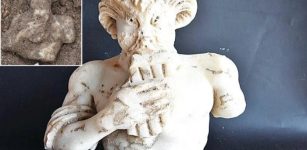 1,700-Year-Old Statue OF Greek God Pan Unearthed In Istanbul
Archaeology | Jun 9, 2023
1,700-Year-Old Statue OF Greek God Pan Unearthed In Istanbul
Archaeology | Jun 9, 2023 -
 Neanderthals Hunted Dangerous Cave Lions In Eurasia – New Study Shows
Archaeology | Oct 12, 2023
Neanderthals Hunted Dangerous Cave Lions In Eurasia – New Study Shows
Archaeology | Oct 12, 2023 -
 Huge Ancient Underground Stone Circle Discovered Inside Cornwall Neolithic Henge
Archaeology | May 21, 2022
Huge Ancient Underground Stone Circle Discovered Inside Cornwall Neolithic Henge
Archaeology | May 21, 2022

